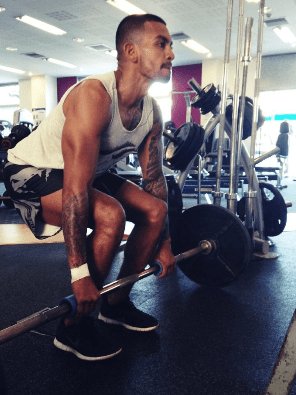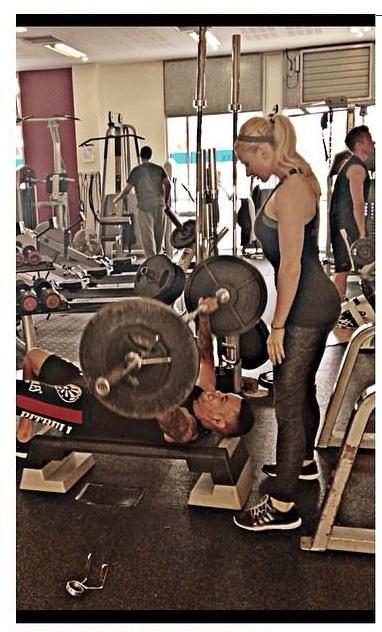
Do We Need Strength Training for MMA?
By Sabina Skala
Strength and conditioning for combat sports has recently become a bit controversial. After an initial boom, when s&c was considered mandatory to improve the performance, it has recently lost some steam. Just a couple of years ago we all could see trainers posting videos or pictures of the fighters going through some grueling training using tools like sledge hammers, tires, battle ropes, Bulgarian bags and more traditional barbells, dumbells and kettlebells. It still happens now but there is more and more voices out there that claim strength and conditioning is not really what combat athletes should do, and that the main work should be done on the mat, cage or in the ring and that spending hours in the gym lifting weights only takes away that precious time they should spend sparring and practicing the techniques. So where is the truth?
 IS TRAINING FOR STRENGTH A NECESSITY OR WASTE OF TIME FOR AN MMA ATHLETE?
IS TRAINING FOR STRENGTH A NECESSITY OR WASTE OF TIME FOR AN MMA ATHLETE?
I can only speak for what I practice with the athletes I train and what I believe in so here it is. I BELIEVE THAT STRENGTH AND CONDITIONING PLAYS A VERY IMPORTANT ROLE IN TRAINING OF A SUCCESSFUL MMA ATHLETE AND SHOULD NOT BE UNDERESTIMATED. However, I also believe that if you are new to the sport (and this applies to any sport not only martial arts) you should not worry that much about the conditioning aspect but spend your time practicing the art of whatever sport you have chosen to excel at. The benefits of strength training can be truly appreciated by intermediate and advanced athletes, who are comfortable with the techniques of their discipline and therefore can apply the strength and power they gain in the gym to their art. This is especially the truth for such complex sports as MMA, BJJ or any other martial art. The technique will most of the time be superior to brute strength, but if you have 2 athletes with the same technical abilities and knowledge of the game, it is the one that is stronger and better conditioned that not only stands a greater chance to win the fight but also a greater chance to take less punishment. There is a saying that “It’s not about the car, it’s about the driver”. It is true… to a degree. If you have a great driver driving a bad car, he may win against a bad driver driving a fantastic car however, he will still lose against a great driver driving a great car. If we think about an MMA fighter as a driver and a car then the technical coaches are the ones that develop the driver’s skills and the strength and conditioning specialist as the ones that take care of the car – when these 2 work well – the final product is not a great athlete, it is the ELITE HUMAN MACHINE.
So why is it so important for a COMBAT ATHLETE to be strong?
In the end, he/she moves or reacts only a weight which is close to their own, etc, why the fighting practice sessions are not enough to truly progress in the sport?
I strongly believe in fundamentals, not only from the standpoint that the stronger you are the more damage you can cause in your opponent. I believe in strength training because it is an extremely effective in injury prevention, especially for such a contact sport as MMA. It does not matter that much how many times you can hit the tire with a sledge hammer or how long you can go full out on an airdyne whilst wearing a gas mask. Some may think it looks cool but it is not necessarily effective. In my opinion - deadlifting 2 x your body weight moving the bar fast with a perfect technique looks much cooler. Injury prevention is one of if not the most important role of strength training for combat sports. We need to work on creating mobile yet stable joints thus INJURY PREVENTION thus prolonging your client’s athletic career.
6 Pillars of Strength:
- Press movement
- Pull movement
- Squat movement
- Hinge / lift movement
- Core (resisting rotation, resisting flexion)
- Loaded carry
The basics of learning tension, applying the correct body structure and absorbing the load through both muscular and skeletal systems, understanding the use and activation of the mid-section and also the importance of the tension through the whole body can never be overestimated. The effort of the BODY and the MIND and the feeling of lifting big load is what aids the confidence when in the cage, ring or matt, providing technical skills are in place.
Make your athletes strong before adding any plyometrics, balance, ballistic or speed training. I still see so many trainers and video posts, where fighters are jumping over, on top and off boxes etc and it is clear that they are not strong enough to provide stability for the knees to absorb the shock. If they cannot front squat at least their body weight with correct from - don't make them jump, it is asking for a blown knee or Achilles tendon injury. Find the weaknesses and deal with them before progressing.
The aim of strength training is to create a balanced athlete, hence we have come up with the standards we are training our athletes towards.
 Here are some of the basic guidelines for 1RM – max weight you can lift 1x only with a correct technique:
Here are some of the basic guidelines for 1RM – max weight you can lift 1x only with a correct technique:
- Deadlift 2 x body weight
- Back Squat 1.75 x body weight
- Front Squat 1.5 x body weight
- Bench Press 1.5 x body weight
- Strict (Military) Press 0.9 x body weight
- Weighted Pull Up body weight + 0.5 x body weight
- Overhead Squat 5x @ Bodyweight
- Core strength – standing ab wheel roll outs x 3
The above are basic standards and it doesn’t mean that you have to stop there, however you need to remember that you are working with a combat athlete not a powerlifter, so working towards 3 x bodyweight deadlift will not necessarily improve the performance but will have a big impact on CNS and recovery, which considering how much time the fighters spend training can actually be counterproductive. It is not worth for them to miss the technical or sparring sessions because they are still recovering from lifting weights in the gym.
Training strength - stick to basics, certainly providing you have enough time in your hands you can add some supplemental work, however fundamentals come first. If I have an athlete for 30 mins, I will better make sure these 30 mins have been used to the best of his/her ability and advantage.
Strong comes first, once Strong is in place, you can play with your training more without risking injuries and getting more speed, power and endurance benefits out of it.
How strong is strong enough for a combat athlete?
The above standards are most of the time sufficient, but it depends on an athlete you train. I hardly ever exceed the 1RM’s values above but rather focus on building the speed and volume on sub-max loads instead. It all depends on the natural abilities of the athlete, some are better predisposed to power and strength training, some have great endurance but take time to develop strength. The training has to be tailored specifically for both types but the goal will be the same – strong, mobile and injury proof, resilient fighter who if needed can go for 5 x 5 rounds not only showing the ability to be fast and powerful but also to withstand the pressure and absorb blows.
Proper strength training can benefit any athlete. In MMA, you need to deliver your techniques with speed, and you need to be able to sustain that delivery over time. But without strength, neither speed nor endurance will amount to anything, strength development should be therefore a significant part of any successful MMA athlete’s training.
 Sabina is originally from Poland. She is a certified and highly experiences strength and conditioning coach. She has trained under numerous world’s top coaches and is still investing her time in constant research and improvement. Sabina has featured in Men’s Fitness, The Guradian, she also appeared on Super Human Radio and has written for various websites on the topic on s&c for Combat sports. She has taught at seminars and Expos in UK and worldwide (including Ireland, South Africa, Australia and Holland) alongside the likes of Mike Mahler, Brooks Kubik and Dan John.
Sabina is originally from Poland. She is a certified and highly experiences strength and conditioning coach. She has trained under numerous world’s top coaches and is still investing her time in constant research and improvement. Sabina has featured in Men’s Fitness, The Guradian, she also appeared on Super Human Radio and has written for various websites on the topic on s&c for Combat sports. She has taught at seminars and Expos in UK and worldwide (including Ireland, South Africa, Australia and Holland) alongside the likes of Mike Mahler, Brooks Kubik and Dan John.
Sabina’s stable of clients includes pro MMA as well as top BJJ athletes, triathletes, polo players, climbers, dancers and military personnel. She has also successfully trained top male models. She works closely as a Strength and Conditioning Coach with Balance - Sports Injury Physiotherapy clinic in London.
As a former competitive athlete Sabina believes that each is truly responsible for the performance potential and that we all are capable of limitless possibilities when we put our mind and hard work to it. Contact info: [email protected] or via contact form www.cjscombat.com.




